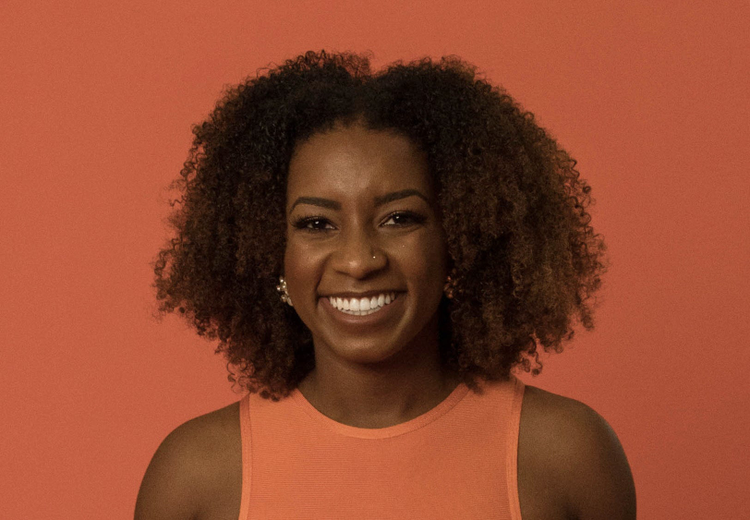Bria Alexander’s journey to Adobe design

Bria shares her nontraditional route to her chosen career—and a vision for its more inclusive future.
Bria Alexander has a mantra: “Where you start isn’t where you’ll end up.” And that’s certainly true for her—having switched from early years in sales to a career in design, where she’s found her professional home.
As a Brand Experience program manager, Bria now works across a wide swath of areas—including brand, icons, content strategy, AI, and developer programs.
“It’s a broad charter—and a lot of fun,” she said.
One of the notable projects she took part in recently was Adobe’s rebrand of its Creative Cloud, Experience Cloud, and Document Cloud. She helped manage and organize the team that oversaw the brand design—from colors, app icons, splash screens, imagery, and much more.
A large part of her role is making sure that everyone is happy and communicating well.
“I get inside the designers’ brains—to understand what potential problems may arise and what their pain points are likely to be,” she said. “That skill has served me well in my job.”
In that aspect, her current position does have some similarities with her previous work in sales.
“Both roles are about enabling the team to be their very best selves,” she explained. “And to do that requires both personal and professional awareness, top-tier listening skills, and constantly checking back to make sure that we’ve understood one another,” she explained. “That’s especially invaluable in design, where we’re focused on subtleties like the nuances of colors and shades.”
An embracing community
For Bria, the best part of working with the design team is the people.
“It’s been eye-opening to see what’s possible for an organization’s culture,” she said. “Everyone here wants to support each other and their creative endeavors—inside and outside of work. And my colleagues are involved in truly incredible projects outside the office, too. It makes this such an open, interesting place to be.”
Beyond the camaraderie, Bria has been thrilled to discover opportunities beyond the scope of her job. For example, an invitation to emcee at the Adobe Design Summit led to further, similar opportunities—including emceeing the three-day DesignOps 2020 virtual conference from Rosenfeld Media and interviewing Nikole Hannah-Jones of the New York Times’ 1619 Project.
“I found that I have a talent for this—something I might not have discovered if my leadership team hadn’t given me the chance in the first place,” she said. “And this genuinely surprised me: I’ve learned that a job can provide you so much more than a livelihood: I have so many opportunities to grow—beyond what I expected or thought was available to me.”
Bria’s nontraditional background brings a lot to her team—such as her ability to sell colleagues on an idea and a comfort level with talking through disagreements. For this, she leans heavily on her communication skills.
An eye to the future
When Bria looks forward to the future of design, she sees the field becoming much more diverse and inclusive.
“The COVID-19 pandemic has put an emphasis on racial and social injustice,” she explained. “And it’s made design organizations in tech very aware of the deficit of perspective design teams have to effectively address some of these inequities.”
For Bria, part of the boon of her journey as emcee has been the ability to share what it’s like as a Black woman in tech as well as to highlight that absence of perspective.
She looks forward to seeing the field of design welcome more perspectives, to a time when companies carry out more explicit work to ensure that they’re hiring diverse co-creators and inviting in diverse perspectives.
“So many products have simply passed over minorities, especially Black people,” she said. “That needs to change for companies to fully take advantage of the market opportunity in front of them. We must create products that match the needs and include the preferences of the diverse audiences that love and use them, including making products fully accessible and just as fun to use for users with disabilities as for users without.”
“I believe we’re all entitled to the best and most delightful user experiences, no matter who we are, where we come from, or what abilities we are born with,” she added.
As for her own future: “I want to continue to work in design,” she said without hesitation. “My experience in Adobe Design has opened up a vista of so many opportunities for me.
After all, “where you start isn’t where you’ll end up,” right?